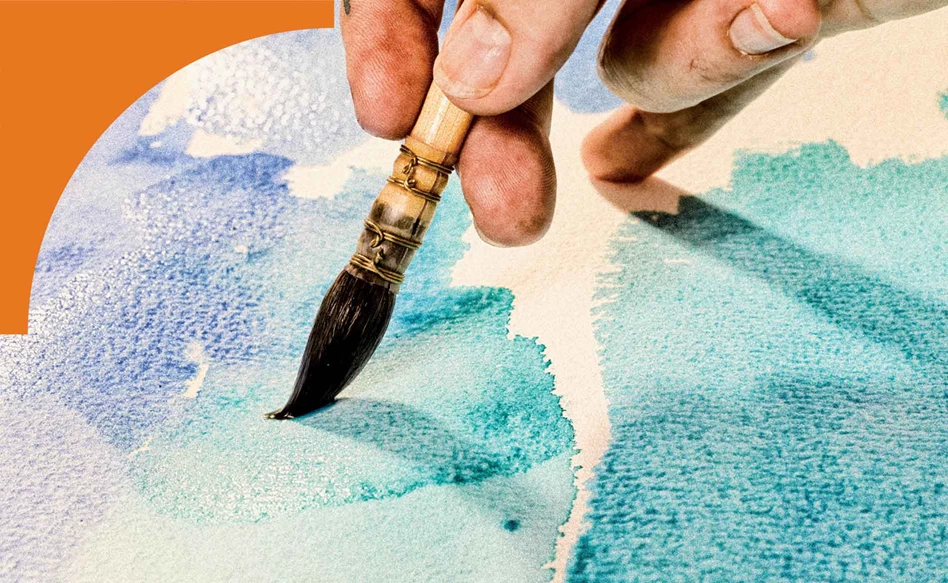
Watercolour paper - the basics
Watercolour is a technique that is typically practised on paper. Your paper is the very foundation of your work and that is why it is important for it to meet certain quality requirements. The paper you choose is also partly personal preference.
Features of the paper
Do you work with a lot of water? Then a paper block glued on four sides is recommended. This prevents the paper from bulging. Also, ‘grammage’, the weight of your paper, is important here. The thicker your paper, the more water it can hold.
There are different sizes and structures. The size you choose is entirely up to you. The structure is too, of course, but please note that the coarser your surface, the more paint pigment will accumulate in the dimples of the paper. This results in a coarser result.
Watercolour paper is characterised by the glue used inside the paper as well as on its surface. This glue largely determines the expressive quality of the paint. Gluing is necessary to prevent the paint from seeping through and to help the colour remain on the paper. This allows sunlight to pass through the transparent paint and reflect off the white background, allowing the colours to sparkle. All of the glues in the Royal Talens range have a synthetic base and are therefore vegan, except for Rembrandt 100% cotton watercolour paper.
Two watercolour techniques explained
The wet in wet technique: after creating a wet surface, you can continue working with your watercolour brush. The paint will flow over your paper. This allows you to produce areas of colour with less defined edges. Control of the paint is also reduced. Because the white of the paper is traditionally used in place of white watercolour paint, you should leave any white parts open on your paper. This can prove quite difficult when using the wet in wet technique, but there is one tool that can help: Liquid Masking Film, a natural liquid rubber that repels water and paint after drying. You can easily remove this film after drying the paint, making the colour of your paper visible again.
The dry technique: working with watercolours on a dry surface. This technique allows you to work in more detail.
You can combine multiple techniques in the same work.







